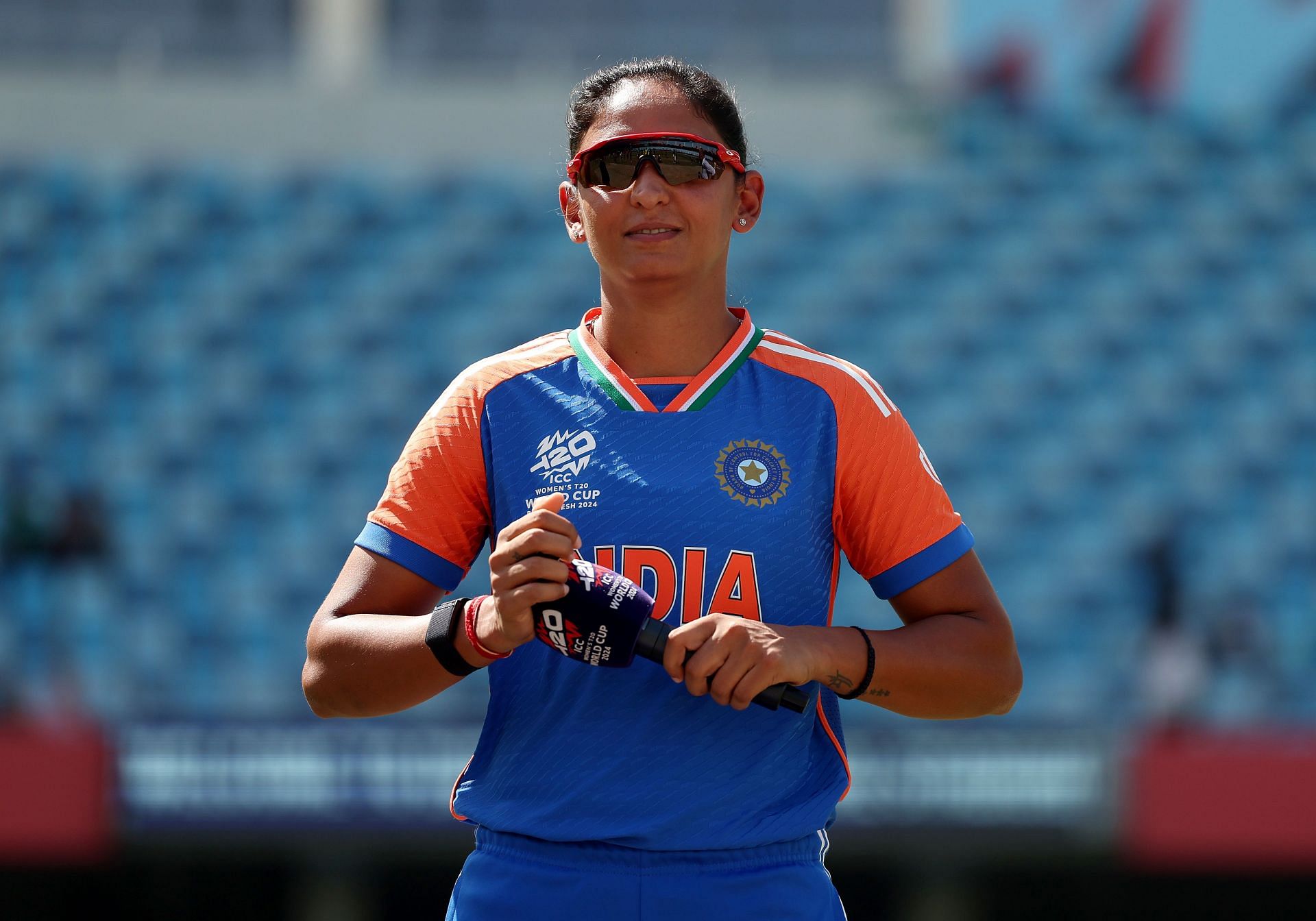
3 reasons why IND vs SL 2024 Women's T20 World Cup match could be make or break for Harmanpreet Kaur's captaincy career
Indian women's team skipper Harmanpreet Kaur has been forced to deal with a do-or-die scenario in the early stages of the 2024 Women's T20 World Cup campaign. A heavy loss to New Zealand in their opening clash has made their remaining matches against Sri Lanka and Australia extremely crucial for qualifying into the semi-final stages.
Expectations were high from the Women in Blue this time around after their heartbreak in South Africa during the last edition. A lot has transpired since then, particularly the Women's Premier League (WPL), which has helped unearth talented players, catalyze their development, and bring them up to speed courtesy of early, valuable exposure against international players.
Harmanpreet Kaur has been at the helm for quite a while, and has been part of the entire journey. However, of late, she has struggled to keep up with the game and has been caught lacking on several occasions. With leadership candidates like Smriti Mandhana and Jemimah Rodrigues waiting in the wings after attaining enough experience, Harmanpreet is facing a steep battle to cement her place as captain.
Should India falter against Sri Lanka in their upcoming match, it would more or less seal their elimination in the tournament. A group-stage exit after such an investment would not bode well for Harmanpreet Kaur, and the management would be forced to take the team in a new direction under a new leadership candidate.
On that note, let us take a look at three reasons why the IND vs SL 2024 Women's T20 World Cup match could be make or break for Harmanpreet Kaur's captaincy career.
#1 Harmanpreet is struggling with role clarity and her own place in the playing XI
Harmanpreet Kaur has had a tough run in T20Is, with only 137 runs coming off her last seven outings. More so than the lack of runs, the confusion behind her role in the batting unit is more concerning. Both the aforementioned factors question a player's presence in the batting unit, and the situation becomes more grave when the player in question is the captain itself.
She was deemed as the ideal No.4, being the link between the top-order and the middle-order. Her ability to play spin also made her presence in the middle overs justified. However, after experimentation with the No.3 spot during the build-up to the T20 World Cup, it was Harmanpreet who unexpectedly took on the role.
The plan was dropped at the same rate as it was conceived. After poor returns in the crucial batting position in the warm-up games and the opening clash against New Zealand, the skipper dropped down the order, while Jemimah Rodrigues came in at No.3.
Amid all this confusion and struggles with form, her future as a T20I batter is concerning, which directly translates to her captaincy future.
#2 Harmanpreet has had more than enough time at the helm, but the results that matter have not transpired
Series wins over Bangladesh and the Asian Games medal mask the true woes of the Indian women's team in white-ball cricket. Recurring failures in major tournaments, with the most recent failure coming at the Asia Cup being a major wake-up call, has been a probing issue.
The Asia Cup 2024 was a tournament earmarked for India to win, and they managed to fumble that despite heading as outright favorites.
White-ball series losses at home to England and Australia showcase that the gap to the heavyweights is still quite glaring.
Being eliminated in the group stage of the World Cup would be a huge step back for the women's team, especially after they began to feature in the knockout stages consistently in recent times. The management has to take a major decision when it comes to the white-ball side, with India primed to host the next edition of the 2025 Women's ODI World Cup.
#3 Questionable decisions being made consistently
As mentioned earlier, the decision to promote herself to No.3 was a baffling decision that has already been well-documented. However, there are some other choices made by the skipper that have been equally surprising, undermining her credentials as captain.
Renuka Singh Thakur is one of the best exponents of the new ball, getting it to swing a long way. However, Harmanpreet Kaur opted to open the bowling with Pooja Vastrakar in the New Zealand clash. While Renuka bowled the next over from the other end, the early move backfired as New Zealand set the tempo by smashing Vastrakar for two boundaries off the first three deliveries of the contest.
India went bowler-heavy and pace-heavy in that contest but ended up giving Vastrakar only a solitary over. The pacer was not brought back into the attack after the first over disaster. The lack of batting depth was then exposed during the run chase.
Even during the next match against Pakistan, Deepti Sharma was promoted over Sajeevan Sajana when there was an option of bolstering the net run-rate. Granted India had lost two wickets off consecutive deliveries at that stage, but Sharma's experience could have been the safety net instead of the go-to option.
India needed 26 runs off 27 deliveries at that stage with six wickets in hand. Deepti Sharma scored seven runs off eight deliveries, while Sajana scored a boundary off the sole delivery she faced to seal the win.